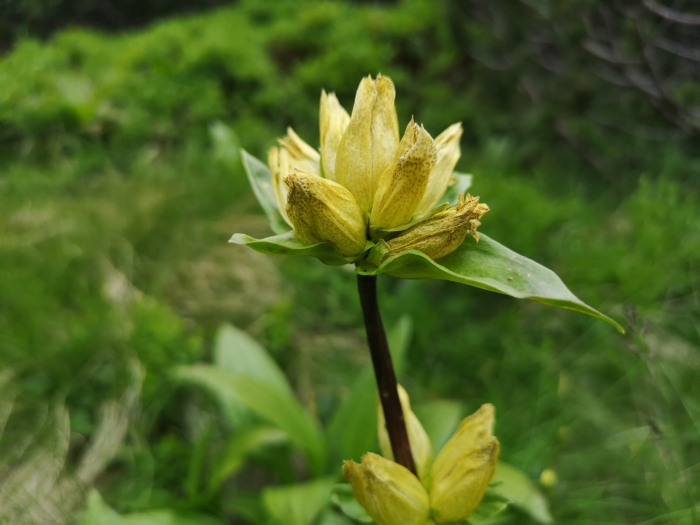Spotted Gentian
(Gentiana punctata)
Spotted Gentian (Gentiana punctata)
/
/

Jens-Christian Svenning
CC BY 4.0
Image By:
Jens-Christian Svenning
Recorded By:
Copyright:
CC BY 4.0
Copyright Notice:
Photo by: Jens-Christian Svenning | License Type: CC BY 4.0 | License URL: http://creativecommons.org/licenses/by/4.0/ | Rights Holder: Jens-Christian Svenning | Publisher: iNaturalist | Date Created: 2019-07-20T12:24:44-07:00 |

























Estimated Native Range
Summary
Gentiana punctata, commonly known as Spotted Gentian, is a perennial herb native to subalpine and alpine meadows in Central and Southeastern Europe. It typically grows at altitudes of 4,900-8,500 feet (1,500-2,600 meters) and reaches heights of 8-24 inches (20-60 cm). Spotted Gentian has a striking appearance with its erect stems and lance-shaped leaves, and it is particularly noted for its bell-shaped, purple flowers with greenish spots, which bloom in the summer and are quite showy. The plant’s roots have been used traditionally in herbal medicine.
Spotted Gentian is appreciated for its unique, spotted flowers and is often used in rock gardens, alpine collections, and as a border plant in gardens that can replicate its native mountainous conditions. It requires well-drained, neutral to acidic soil and consistent moisture, and it prefers full sun to partial shade. While it is not commonly found in cultivation, it can be grown from seed or division. It is relatively low-maintenance once established but can be susceptible to root rot if overwatered or planted in poorly drained soils. Due to its specific habitat requirements, it is not considered invasive when grown outside its native range.CC BY-SA 4.0
Spotted Gentian is appreciated for its unique, spotted flowers and is often used in rock gardens, alpine collections, and as a border plant in gardens that can replicate its native mountainous conditions. It requires well-drained, neutral to acidic soil and consistent moisture, and it prefers full sun to partial shade. While it is not commonly found in cultivation, it can be grown from seed or division. It is relatively low-maintenance once established but can be susceptible to root rot if overwatered or planted in poorly drained soils. Due to its specific habitat requirements, it is not considered invasive when grown outside its native range.CC BY-SA 4.0
Plant Description
- Plant Type: Herb
- Height: 0.5-1 feet
- Width: 0.5-1 feet
- Growth Rate: Slow
- Flower Color: Blue
- Flowering Season: Summer
- Leaf Retention: Deciduous
Growth Requirements
- Sun: Full Sun
- Water: Medium
- Drainage: Medium, Fast
Common Uses
Border Plant, Low Maintenance, Rock Garden
Natural Habitat
Subalpine and alpine meadows in Central and Southeastern Europe
Other Names
Common Names: Spotted Gentian
Scientific Names: , Gentiana punctata, Coilantha campanulata, Coilantha punctata, Dasystephana punctata, Gentiana campanulata, Gentiana immaculata, Gentiana immaculata, Gentiana punctata f. angustifolia, Gentiana punctata f. concolor
GBIF Accepted Name: